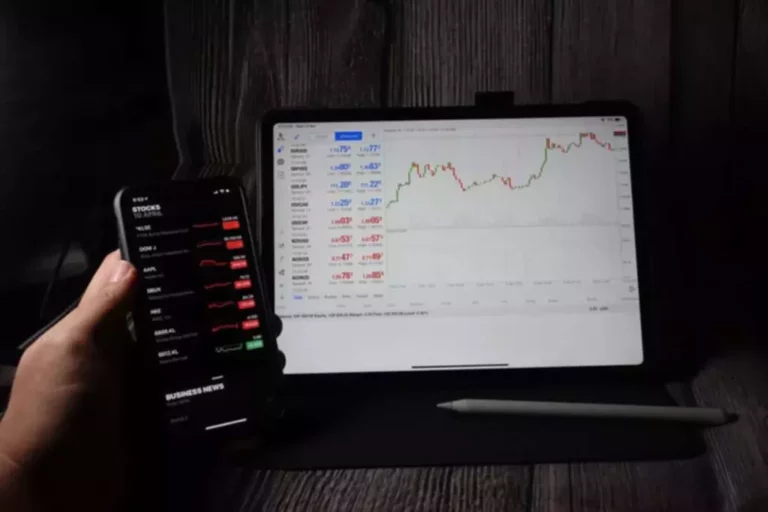Whether you choose an energetic or passive investing strategy, the focus ought to be on consistency, discipline, and a long-term perspective.” – John Doe, Investment Advisor. Passively managed large-cap funds have carried out relatively better than actively managed peers, and command extra money. It is the reverse for small-cap funds; actively managed funds have done higher and command more money. For instance, passive funds tend to have a lower expense ratio than lively https://www.xcritical.in/ funds. Active funds are inclined to have a better degree of risk as a result of the flip aspect of outperformance is underperformance, and which method the fund goes depends on the selections taken by the fund supervisor. As for passive funds, the primary risk they face is what’s often identified as the tracking error, which is the deviation of the fund’s performance from the benchmark index.
Hence, the portfolio turnover is decrease than that of actively managed funds, leading to fewer instances of capital gains distribution. This reduces the tax liability of the investor, making passively managed extra tax environment friendly. Due to energetic management by skilled fund managers, active funds have the potential to outperform the market. Fund managers make strategic choices to ship larger returns and attempt to take benefit of market inefficiencies. Active funds are imagined to give you better returns than the benchmark index by way of active fund management.
The Position Of Alpha In Mutual Fund Choice:
This comprehensive analysis initiative has been unfolding across 9 international locations for 20 years, continuously shedding mild on the ever-evolving investment landscape. SPIVA’s protection extends to Latin America, the United States, Canada, Europe, the Middle East, North Africa, South Africa, India, Japan, and Australia. Across these areas, SPIVA examines more than one hundred classes, offering an intensive evaluation of the investment landscape. Their scorecard, or analysis report, is printed semi-annually, establishing itself as a trusted useful resource for buyers and professionals. This shift from actively managed funds to ETFs in the large-cap space indicates the attention amongst buyers that alpha era isn’t really easy.
- For granularity on the info and to make it comparative, we now have taken AUM information from MFI360 by ICRA Analytics.
- Determining which technique is best requires an evaluation of their respective performances.
- One of the most important downsides of actively managed funds is their greater expense ratio.
- Thus, they hold fixed track of adjusting market circumstances to benefit from short-term fluctuations and market inefficiencies.
- Another option within the active space could be flexi-cap fund, an open-ended, dynamic fairness scheme.
- The level is, large-cap-oriented passives with Rs three.59 lakh crore command more than active large-caps, which have Rs 2.forty six lakh crore.
For granularity on the info and to make it comparative, we have taken AUM data from MFI360 by ICRA Analytics. Index funds and ETFs following large-cap indices just like the Nifty50, Nifty100, Sensex, and so forth., had an AUM of Rs three.59 lakh crore in December 2022. In index funds, whose job is to mimic the underlying index, they’ve a cash element to handle redemptions and a little bit of expenses. There is a monitoring error as nicely, as 100 percent correspondence with the benchmark isn’t attainable.
The below tabular column reveals the present worth of the investment on the finish of the 10-year period after being invested under varied categories of funds. They seek to outperform the benchmark index to gain you profitable returns in the lengthy term. The modus operandi noticed is that when a consumer pays amount to them, big income are shown in his account online inducing more investment. However, they stop responding when client calls for return of amount invested and revenue earned. During the coronavirus pandemic, India’s financial services sector received a booster dose of digitalisation, resulting in a massive surge in new demat accounts. From just 4 crore during pre-pandemic occasions, whole demat accounts in India have climbed to 10 crore today.
most Index Or Passive Giant Cap Funds Fail To Beat Benchmarks In 2023
Decisions to purchase, promote, and rebalance the portfolio are actively made based on quantitative and qualitative evaluation of a number of market and economic tendencies and elements to maximise returns. The increase in AUM sped up dramatically after 2018, i.e., in the last 4 years. 2018 was a difficult 12 months for inventory markets with only a few shares driving the index up and almost all actively managed funds did not ship a optimistic alpha.
The returns of passively managed funds are extra secure and constant as they purpose to replicate that of the benchmark index. Even though they might not precisely match the returns of the benchmark, they don’t are inclined to significantly underperform both. So why do many still imagine that lively funds would beat index returns? Maybe because human beings suffer from over-optimism bias, i.e., the tendency to exaggerate their own abilities, as we undergo from the phantasm of control or data. In a 2006 research performed by James Montier with 300 fund managers throughout the globe, nearly 74% of respondents thought themselves above average at their jobs. This is statistically unimaginable and shows our inherent bias of superior talent when pitted against others.
Execs And Cons Of Energetic Investing
A Nifty Index ETF will maintain all equities equally because the Nifty 50 index. This commitment to safety allows Appreciate to supply a safe online buying and selling environment. Let us briefly have a glance at what Active and Passive funds are to precisely understand which is better. Whereas Alpha can’t be used to measure the portfolio of Passive funds.
The fund manager here has no lively function except to copy the index. These funds are additionally referred to as tracking funds as a end result of they try to precisely mimic a set benchmark or index. Of all of the home US funds that generated a optimistic alpha as on Jun-19, 63.4% of the funds repeated the alpha era in 12-months ending Jun-20 and only 24.7% managed the identical feat in 12-months ending Jun-21. The rise of passive investing is reflected in the large measurement of Assets Under Management (AUM).
Attention Buyers:
To invest in lively funds which may help you outperform the broader markets, I counsel subscribing to PersonalFN’s unbiased flagship mutual fund research service, FundSelect. The development of passive funds hasn’t come at the expense of energetic funds. When determining the investment strategy for large-caps, be it lively or passive, one must analyse the overlapping factor which is an unavoidable constant within the dynamic world of large- cap funds. Data suggests that 73% of the large-cap funds have 40-60% overlapping. Some overlap is a given in the large-cap world, but extreme overlap reduces all the advantages one can get from extra diversification, irrespective of whether or not the method is lively or passive. Sometimes actively managed funds take “cash calls”, i.e., intentionally have a part of the portfolio in money, in a bearish market.
For energetic investing, SEBI regulates the activities of mutual funds, hedge funds, and portfolio managers, setting guidelines for disclosures, portfolio composition, and investment strategies. On the other hand, passive investing relies on the correct monitoring of market indices. SEBI has mandated strict adherence to index replication methodologies to stop deviation from the stated funding goals of passive funds. But if you are seeking to beat the benchmark index and potential earn higher real returns (also often known as inflation-adjusted returns), an active fund is definitely a higher option.
7 Tax Effectivity
Investors who need to put cash into a low-cost method for the long term may select to invest in a passively managed fund. Moreover, lots of passive funds supply broad diversification throughout asset courses and sectors. They are additionally transparent in their holdings and investment technique and are typically more tax-efficient than active funds. Both lively funds and passive funds could be advantageous in your portfolio. To determine which is best, you have to think about your financial objectives, threat tolerance, investment horizon, and preferences.

In reality, with the rise in laws on the MF trade and reducing energetic share in large-cap schemes, alpha technology has turn out to be a problem. Tolerant to actively managed funds, there isn’t a strain to outperform the market and create larger returns. Passive investing in the stock market is a less hazardous strategy to assist. Both lively funds and passive funds include their very own distinct execs and cons, and neither is healthier as an investment than the opposite.

The debaters however agreed that for large-cap companies, passive investing is a more ideal selection since it avoids the chance of human bias and provides returns that are in line with how larger markets have carried out. “In Indian markets, we may see a method more enhanced utilisation of passive technique especially in the large cap universe. In small cap area, we nonetheless have scope for research analysts and fund managers to specific his/her opinion and outperform the benchmark,” Anil Ghelani mentioned. “But I strongly consider in massive cap space, passive funds are there to remain, are right here to develop, and should form a half of any investor’s portfolio,” Ghelani, who was speaking in favour of passive investments, added.
Of all of the top-quartile domestic US funds as on Jun-19, fifty three.6% of the funds remained in high quartile by Jun-20 and solely 4.8% remained in high quartile by Jun-21. Whereas an ETF primarily based on the Nifty 50 will primarily align itself with the Nifty 50 index, and so on. According to the Finity Passive Investing Report 2021, passive assets in India would surpass 25 trillion in AUM by 2025, up from ₹ four.seventy two trillion in December 2021. Redemption payouts underneath all schemes, scheduled for this date, might be deferred to the following business day i.e.
For occasion, most market indices comply with market-cap weighting methodology, which finally ends up in a couple of massive companies having a big impact on the index’s efficiency. Since actively managed funds undertake frequent buying and selling of securities, they have a tendency to have a higher portfolio turnover. This can lead to greater capital gains distribution which may entice taxation despite the fact that the investor has not offered the items of their fund. One of the most important downsides of actively managed funds is their greater expense ratio.